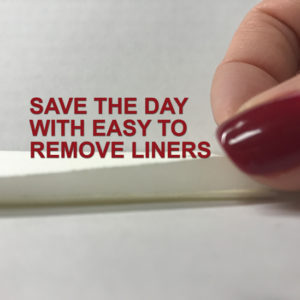
One-Sided Coated (C1S Release Liners) vs. Two-Sided Coated (C2S Differential Release Liners)
C1S One-Sided Release Liners provide protection for an adhesive that is laminated to a film or paper substrate. Because they provide a good, flat, uniform surface, they are often used for die-cutting. The C1S liners basically serve as a delivery mechanism for adhesives undergoing automatic or manual labeling and graphic arts applications.
C2S Differential Release Liners are typically used to carry an adhesive that must be wound together with the release liner on its own surface and then unwound for use. In a wound roll, both surfaces of the adhesive film are contacting the two surfaces of a release liner. Therefore, both surfaces of the release liner need to be silicone covered preventing it from sticking to itself.
Both release liners protect an adhesive until it is time for the application and each liner is specially formulated to have the correct surface energy to pull away while leaving the adhesive fully intact and functional. An experienced tape converter will provide the release chemistry and technology to accommodate virtually any adhesive tape formula.
A differential release liner can also carry two adhesives with a substrate in between that, again, can be wound onto and unwound from a roll. In other words, differential release is essential when working with transfer adhesives, or using two different adhesives on two sides of a substrate.
Differential Release Liners vs. Extended Liners vs. Pull Tabs
A Differential Release Liner is coated on both sides with a silicon-based release that is designed to provide different release values. This provides an easy solution to protect and transport an adhesive until it reaches its application. Extended Liners have a non-adhesive backing that is wider than the adhesive which provides an edge to grab onto to remove the liner when needed. Whereas a Pull Tab has a non-adhesive material protruding at the end of a custom cut tape and is designed for die-cut shapes.
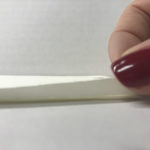
Dry Edge Liner
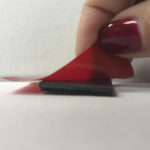
Extended Liner
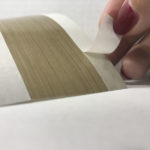
Liner on Edge of Material
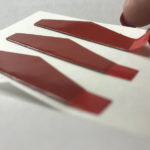
Pull Tab
Differential Release Liners
Because there are two different adhesives (both are usually silicone) on both sides of the liner, the differential release liner development process can be complex. If the release chemistries do not function properly with the adhesives they contact, there will be adhesive chaos. Confusion to the adhesives can cause adhesive tapes to not release easily, to unwind improperly, or to pull off prematurely or partially, to name just a few potential quality problems. Therefore it is important to work closely with product engineers to understand the end performance requirements. They also need to collaborate with process engineers to understand each customer’s unique manufacturing requirements, equipment, and constraints.
Uses for differential release liners are many and used by most industries. In the graphics and signage market, they are used for two-way window decals and piggyback labeling on magazines and coupons. In construction, they are used for roofing tapes and other applications. In electronics, the liners are carriers for very thin adhesives that hold together mobile phones, flat panel displays, and similar devices. Two other key markets include carbon fiber composites and medical applications.
Extended Liners
Extended Liners are best used for adhesive tapes that are straight and supplied on a roll (aka: dry edge or non-adhesive edge). However, I have also seen strips and shapes with an extended liner on a sheet. The extended liner helps reduce labor hours by eliminating the “picking” at a liner on individual pieces when the liner is flushed with the adhesive. It also provides a simple grip to pull the tape from the roll quickly and easily. Extended Liners are often used to remove the backing from the adhesive tape that has been applied to cardboard boxes or envelopes to seal them closed. However, they are also used a lot in the automotive industry for attaching parts together.
Pull Tabs
Many adhesive tape solutions require custom die-cut tapes. Through our low-cost tooling, we can create custom converted tapes in a wide range of sizes. A pull tab can be added for easy removal of the liner. This method is more complex but can often offer a better outcome. With the pull tab protruding at the end of a strip, it provides a faster and better grip and more consistent release at the assembly line. Pull tabs can be used for assembling, joining, attaching, and mounting applications. You will also find them used in applications where it is necessary to remove the tape without leaving residue on either object.
Don’t let the wrong backing slow down your assembly or shipping lines. Our experienced team can help you select the best adhesive and liner for your application. Call us today to speak with a sales representative to start building your customized tape converting solution.
Let Us Convert Your Ideas Into Reality! 1-800-643-5996
